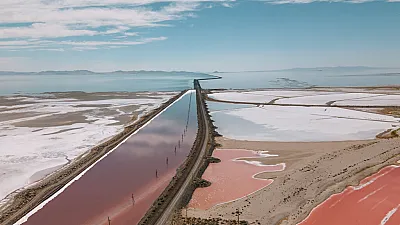Let's create continuous conversations about climate change education: Spreading the Sediment of Science!
Share your ideas and earn a $20 gift card! 💬 Learn More
Utah’s Great Salt Lake Shrinking into Bed of Dangerous Poison
December 12, 2022

The Great Salt Lake in Utah is one of the world’s most unusual bodies of water. It covers almost 1,600 square miles at an elevation of 4,200 feet above sea level. The lake is the largest water mass not connected to an ocean in our hemisphere. The huge lake is drying up. Scientists say that, since the 1980s, more than 40% of the lake’s bed is no longer covered by water. It's turning to dust.
That dust is poisonous. The Salt Lake’s bed contains high levels of arsenic. As more of it is exposed, wind storms are carrying the toxin in the air. Then, people breathe it in. Salt Lake City is close to the lake. It's a fast growing city. 1.25 million people call it home.
Utah officials are working to contain the damage. State lawmakers passed more than a dozen laws this year that restrict water usage from the lake. The problem is, more droughts means farmers and urban residents need more water from the lake and the rivers it feeds, not less.
“We have this potential environmental nuclear bomb that’s going to go off,” a state lawmaker and rancher told The New York Times.
Photo by Urvish Prajapati courtesy of Unsplash.





